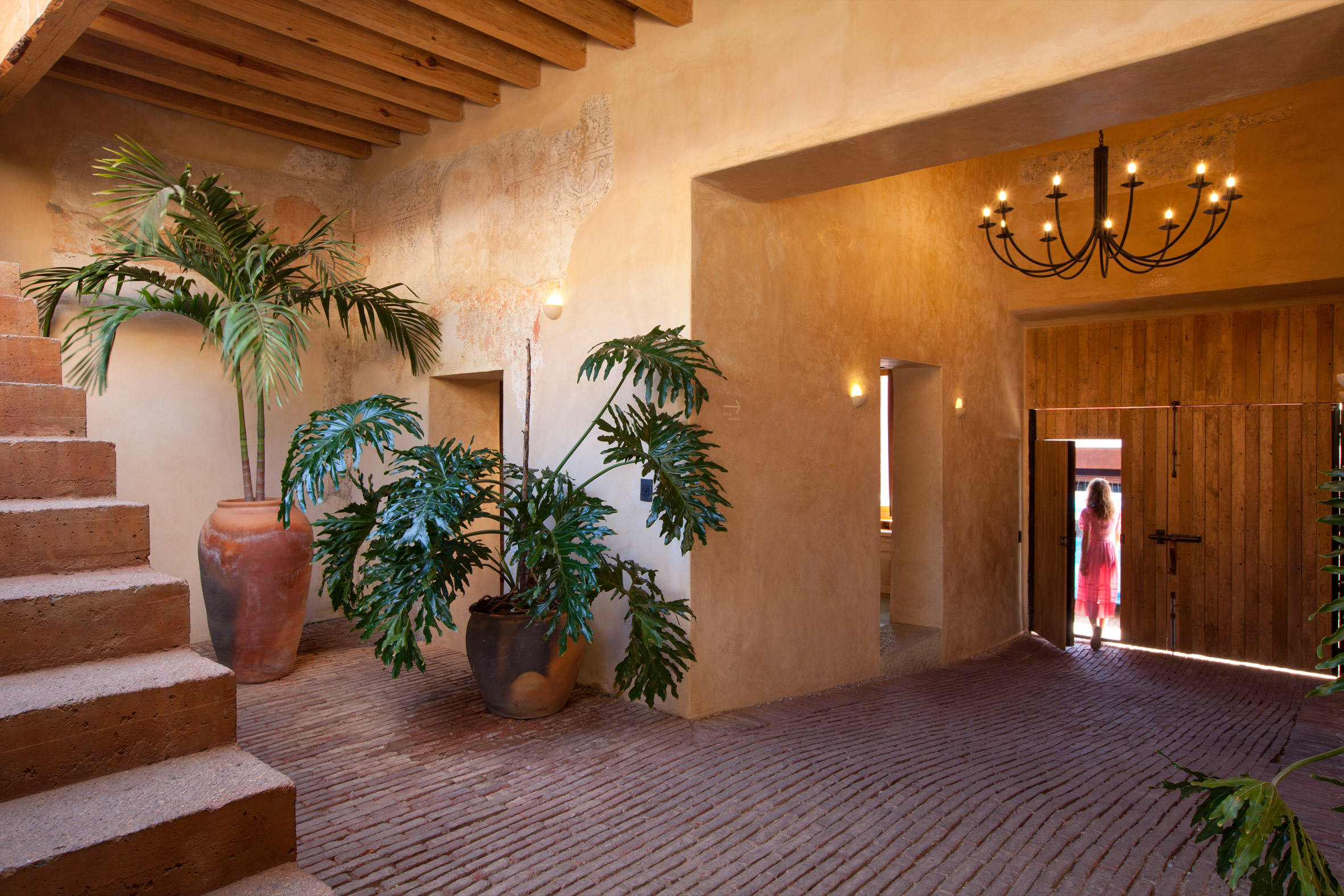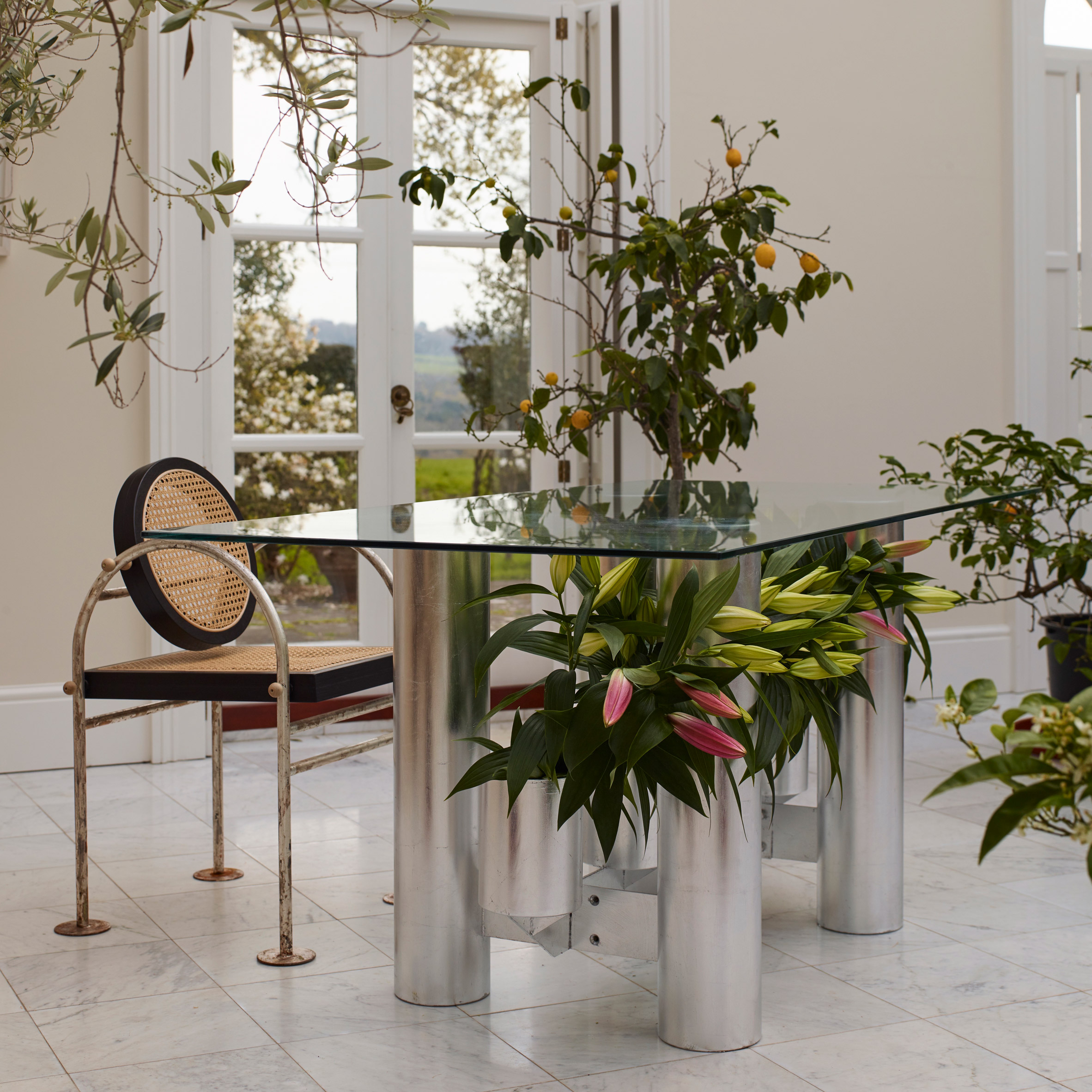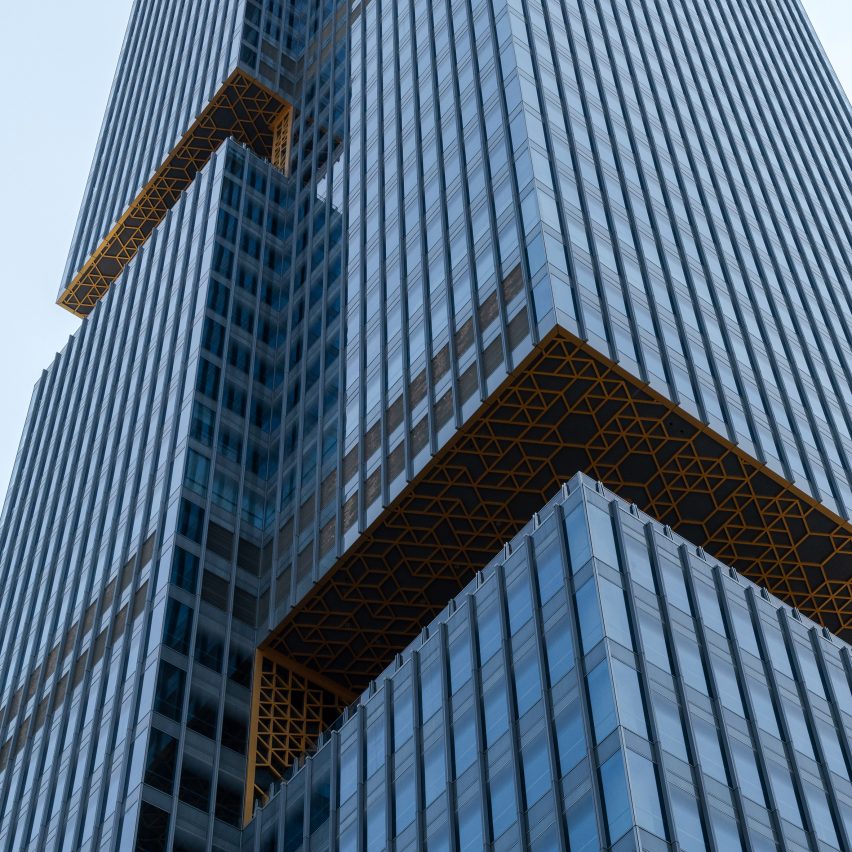
Tony Wilson, Shaun Ryder, Terry Christian, Dave Haslam, Eliot Rashman and New Order’s Stephen Morris are just a few of the well known names featuring in the British photographer’s acclaimed series.
from It's Nice That https://ift.tt/2EB2R0R

Tony Wilson, Shaun Ryder, Terry Christian, Dave Haslam, Eliot Rashman and New Order’s Stephen Morris are just a few of the well known names featuring in the British photographer’s acclaimed series.

Interiors studio Decada Muebles has filled this boutique hotel in Oaxaca City, Mexico with pieces made by the region's artisans.
A majority of the Escondido Oaxaca Hotel takes over a former family home that dates back to the 19th century.
Inside are four of the hotel's total 12 guest rooms – the last eight are located just beyond the house within a more contemporary concrete tower erected by architect Alberto Kalach.

This mixture of old and new influenced Decada Muebles' design of the hotel, which has been almost exclusively decked out with pieces crafted by local craft makers.
"We wanted to create a feeling of timelessness inside an authentic Oaxacan house, where the guests could feel the presence of a craftsman's hand through their work in every nook and cranny," the interior design studio told Dezeen.
"With a mix of minimalism and clean lines in our furniture choices, and the lush landscaping and garden design, we aimed to maximize the possibility of relaxation and sense of serenity as the underlying state while at the hotel."

Guests enter the hotel via the old house, walking through a spacious lobby that's dotted with oversized terracotta plant pots.
Red bricks run across the floor, while the walls are loosely rendered with stucco – faded patches of paint left behind from the house's old fit-out are still visible.
These rustic walls continue through into the restaurant, which serves up a menu of Mexican fusion food.

Local craftsmen have used Sabino, a Mexican wood, to make the tables and chairs that appear throughout the room. They complement a gridded timber shelving unit that openly displays liquor bottles and glassware.
The floor here is clad with locally sourced green-cement tiles – the colour was specifically chosen in a subtle nod to Cantera, a green-hued volcanic rock that's native to Oaxaca and used to build several of its buildings and roads.

When they're not relaxing around the pool, which is up on the roof, guests can head to the split-level "culture room".
It includes a small library and a cosy sofa area decorated with earth-tone vases.

Guest rooms in the old house and the concrete tower have been finished in the same material palette that's been applied throughout Escondido Oaxaca Hotel's communal spaces.
Green-tinted cement tiles cover surfaces in the en-suite bathrooms and Sabino wood has been used to create the rooms' side tables, bed frames and shutters, which can be pushed back to reveal balconies or foliage-filled patios.
Details like the woven palm leaf headboards were also custom made in Oaxaca.

Escondido Oaxaca Hotel is longlisted in the hotel and short-stay category of this year's Dezeen Awards.
It will compete against the likes of Trunk House, a boutique hotel in Tokyo that includes a miniature disco, and Casa Palerm, a guest villa in Mallorca which is fronted by a huge cinema screen-like window.
Photography is by Undine Pröhl.
The post Decada Muebles spotlights local craft inside Mexico's Escondido Oaxaca Hotel appeared first on Dezeen.

Self-taught designer EJR Barnes makes furniture and lighting pieces with "a wry smile". We've rounded up five of his surrealist projects, including a club chair wrapped in Venetian blinds and a table lamp with a candle instead of a bulb.
With a background in sculpture and poetry, London-based Barnes aims to turn "floaty ideas" into functional pieces that question the purpose of the original objects.
"The main thing for me is that there is always a bit of a wry smile happening, without it looking like the whole thing is a joke," he told Dezeen.
"To be making things like this, you've got to have a sense of humour. Because if you take yourself too seriously when you're making arty furniture, then who really are you?"
A different business model for design
Barnes is one of a new generation of designers, which has been enabled by the internet to eschew traditional design education and retail systems.
He learned how to make furniture through YouTube videos, initially working from the backroom of his day job, and now sells his pieces largely with the help of Instagram.
"I've met some incredible clients who are interested in working with me because they've followed what I've been doing for a while," said the designer.
"Using Instagram as a tool means that I can have this very lean business model where it's just me in a studio and a couple of fabricators making things according to demand."
Here, Barnes picks out five pieces that exemplify his approach:

Desk with Four Vessels
Barnes frequently designs hybrid objects with two or more uses in mind.
This desk, for example, features four cylindrical vessels embedded into its steel base. The client, a curator and magazine editor living in east London, is now using these to grow small orange trees.
"We got really into this idea of having a vista under your work," said Barnes.
"So when you look through the window at the garden you see foliage behind glass, and then if you look down through the desk you see foliage behind glass. It creates this dual meaning for the object, which serves as a place for work but also does something else for you."

A Wild Sheep Chaise; Dolphin Hotel Club Chair
Venetian blinds wrap around this cuboid chair, encased in cork window frames.
Hidden behind these is a series of strip lights, which emit an ominous glow when illuminated.
"There's something about Venetian blinds, the patterns and the rhythm of the slats, that I really like," Barnes explained. "You could see them in the background of a film noir, with dusty light filtering through these stayed window coverings."
"I wanted to use this feeling I got from the blinds in something that wasn't a window," he added. "By using them to block out a chair it almost creates this idea that there might be something behind them."

Junior Downhill Anvil
This low side table is made out of plywood and other readily available materials, which Barnes gave the vibrant, polished finish of a vehicle.
The final result resembles a "spaceship sledge" and forms part of a larger, but largely unpublished, portion of his work that is all about sledges.
"I got really interested in people displaying automobilia and historic motorbikes in their homes. And I wanted to create fake examples of this, like fictional objects for movement," he said.
"They never have engines or anything that's too obviously about cars; it's more within the sculptural form. If you look at people like [Romanian artist Constantin] Brâncuși, he did these beautiful carvings, which have a slickness to them that resembles race cars but is simultaneously very primitive."

Bavette, The Glacier, A Silver Room
Since Barnes got his own studio a year ago, he has built or assembled all of his pieces himself, eliminating the need for a finalised render to send to fabricators and allowing him to take a more iterative approach.
This coffee table started from the simple idea of using a kidney-shaped tabletop, cut from a slice of red travertine that resembles the marbling of a steak.
"The process was almost like assembling a collage," he said. "As soon as I had the idea in my head that the tabletop was a slab of meat, the client and I went on the hunt for the kinds of objects that could prop it up."
"It was more like creating a piece of art than a design. You can make a mark, decide it's wrong and change the whole thing or make another mark and take another step and go in a different direction with it."

Analogue Table Lamp No.1
This candle holder is one of several metalwork pieces created by the designer during the coronavirus lockdown, while he taught himself how to weld.
The design is Barnes' take on the classic Armani Casa lighting range, which features "variations of a pyramid on a stick". Here, this motive is rendered entirely in metal and with a candle instead of a lightbulb.
"It's a bit of a joke, really. An analogue table lamp is like the ouroboros of design eating its own tail because we invented electricity to get rid of candles but people want the look of both, no matter if it's not functional," said the designer.
"I want to be playful with form but without sacrificing subtlety. A lot of people, when they say they prioritise form over function, create these crazy, pink, fluffy wherever. Whereas I still want things to be quite reserved."
The post Five designs with a sense of humour by EJR Barnes appeared first on Dezeen.

Dutch architecture firm OMA has built Prince Plaza in Shezhen, an office skyscraper with three cut-outs for terraces lined with golden hexagons.
Located on the waterfront in Shenzhen's Shekou district, the 200-metre-tall tower was built for property company China Merchants Shekou Holdings (CMSH).

OMA created the open-air terraces – called "sky decks" – high above street level by cutting into the shape of the tower, which is made of four volumes clustered around a central core.
Prince Plaza sits in the sightline of views down from the mountains to the sea, so these terraces are intended to lessen the impact of the building on the skyline while creating more vantage points for the public.

A multi-storey podium at the base of the office tower houses a shopping centre with a rooftop garden.
This shopping centre extends several levels below ground, where it connects Prince Plaza to two of Shenzhen's metro lines.

The golden hexagon-patterned filigree used to decorate the sky decks appears again on parts of this podium, visually connecting the complex.
The hexagonal design creates patterns that appear to rise and fall, chosen to reflect the ridges of the mountains and the waves of water that surround the city.

To bring light into the office spaces of Prince Plaza, OMA set two of the vertical volumes of the tower back from the other two.
The offset allows more light in through the wide glass panels of the facade and gives the occupants striking views.

Founded in 1975 by Rem Koolhaas Elia and Zoe Zenghelis and Madelon Vriesendorp, OMA has untaken several buildings in Shenzhen, including the Shenzhen Stock Exchange and the upcoming International Conference and Exchange Centre.
Photography is by Seth Powers.
Project credits:
Client: CMSK (China Merchants Shekou Holdings)
Partner-in-charge: David Gianotten
Project architect: Bauke Albada
Competition team: Andreas Viglakis, Chee Yuen Choi, Lingxiu Chong, Luke Lu, Xu Yang, Yang Shi with Max Bergman, Helen Chen, Tim Cheung, Vanessa Chik, Jocelyn Chiu, Ikki Kondo, Erick Kristanto, Charles Lai, Anthony Lam, Federico Letizia, Arthas Qian, Jue Qiu, Roberto Requejo, Ricky Suen
Design team: Ka Tam, Saul Smeding, Vincent McIlduff, Wanyu He, Yin Ho, Yongwon Kwon, Xu Yang with Daan Ooievaar, Jedidiah Lau, Jenny Ni Zhan, Kathleen Cayetano, Luke Lu, Mavis Wong, Paul Feeney, Slobodan Radoman, Thorben Bazlen, Vincent Kersten
Construction team: Ka Tam, Saul Smeding, Xu Yang, Yongwon Kwon
With: Christina Kuo, Hafsa Siddique, Joanna Gu, Mark Kanters, Yutian He
LDI & MEP: Huasen, Li Hongdi, Li Lian, Lian Xianrong, Liu Chong, Tan Lan, Zhong Yubo
Structure: RBS, Li Shengyong, Zhang Wenhua
Traffic: SUTPC, Jiang Jie, Shao Yuan
Commercial: World Union Properties, Ivy, Luo Yu, Zhang Lin
Facade: ARUP, Jason Paget, Lian Hongbo, Max Wu, Nina You, Robert Wu, Simon Wu
Interior: Benoy, Arnold Kee, Chris Lohan, Elaine Tao, Kai Chung Ng, Kali Chan, Keith Chau, Peter McCaffery, Sandy Tsui
Sustainability: Yuezhong, Songbo Shu, Yuanchang Yu
Landscape: Metrostudio, Ando Kraithera Lolurlert, Antonio Inglese, Lionella Biancon, Valentina Ticino, Zhang Fangfa
Metro station integration: China Railway Tunnel Survey & Design Institute, Hu Jianguo
Lighting: CD+M, Patrick Yu, Sunny Kang, Ted Ferreira, Tony Pascocello, Patrick Yu
Models: OMA / RJ Models
Renderings: OMA / Silkroad
The post OMA creates three open-air terraces for Prince Plaza in Shenzhen appeared first on Dezeen.

Between 1596 and 1647, art dealer and diplomat Philipp Hainhofer traveled around Europe amassing an incredibly rich collection of signatures in the “Große Stammbuch,” or “Album Amicorum.” Akin to an autograph book, Hainhofer’s register is replete with the marks of Cosimo II de’ Medici, Holy Roman Emperor Rudolf II, and Christian IV of Denmark and Norway, to name a few. Covered in red velvet, “Album Amicorum” was part of a larger trend to record family, friends, and acquaintances that began in the 16th Century.
Hainhofer compiled the signatures during the course of 50 years, beginning when he was a college student. As he gained religious figures and royalty as clients, he’d ask them to sign his book and commissioned about 100 detailed illustrations to sit alongside. The elaborateness of the illustrations directly corresponds to the signatory’s status and rank in society.
This week The Herzog August Bibliothek purchased the centuries-old tome—which was thought to be lost until it emerged in a London auction in 1931—for about $3.1 million. It’s the library’s second attempt to acquire the historic book after August the Younger of Braunschweig-Lünebur, who was Hainhofer’s friend, failed to buy for the Wolfenbüttel, Germany-based institution in 1648. (via The History Blog)

Holy Roman Emperor Rudolf II

Left: August II of Braunschweig-Lüneburg , 1613. Right: Ursula Duchess of Württemberg , 1614

Latin poems
